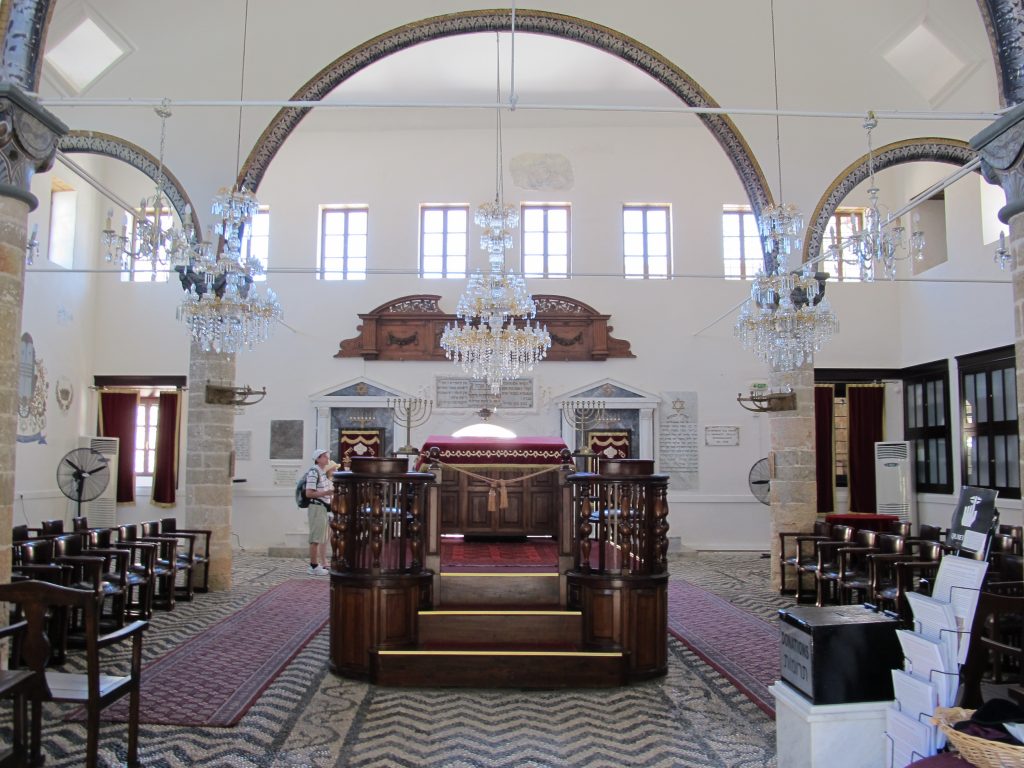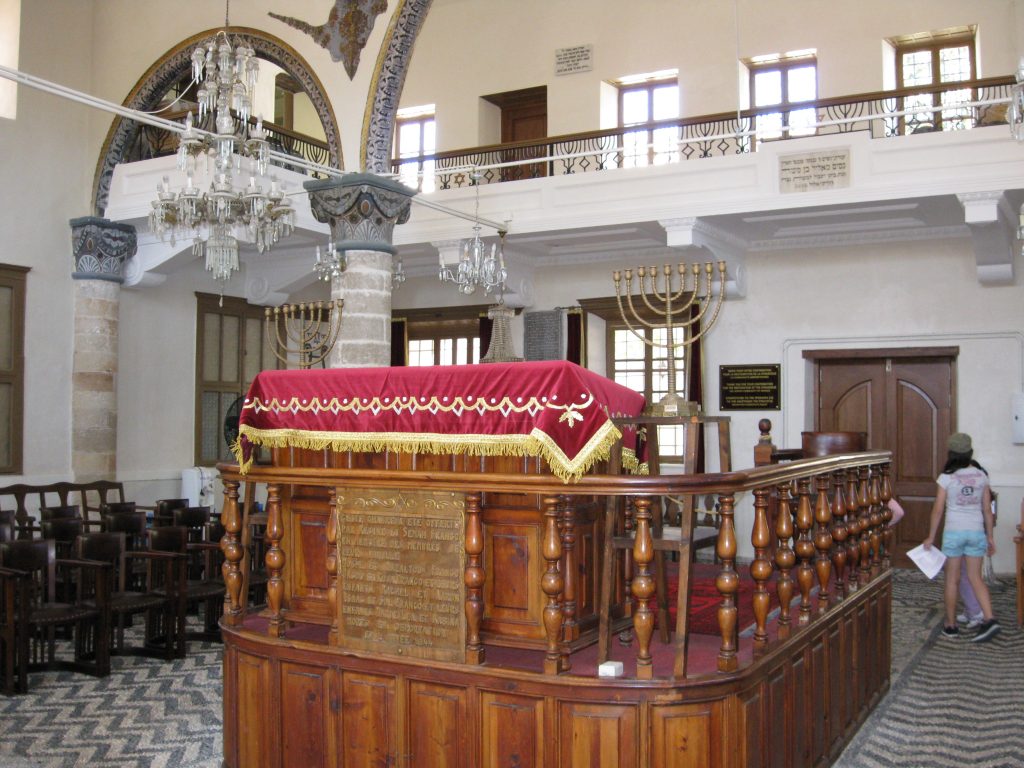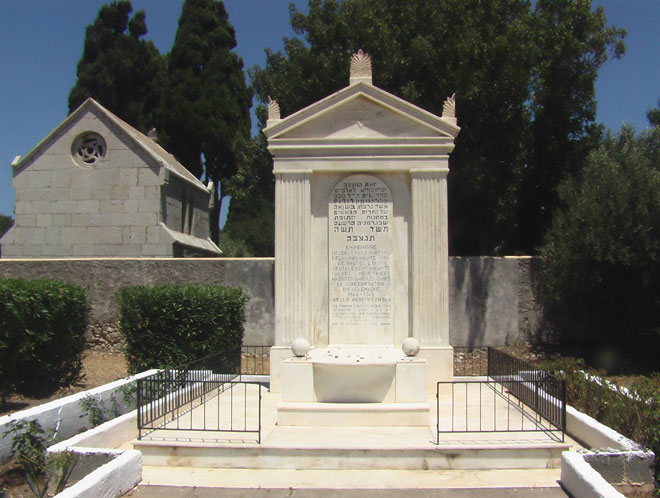
In the fourteenth century, a Jewish community settled behind the ramparts of Rhodes erected by the knights of Saint John after their flight from the Holy Land. These Jews had the strange destiny of finding common ground with the Crusaders in their war against the Ottomans, only to be forced by Grand Master Pierre d’Aubusson to convert to Christianity or flee.
The waves of expulsion from the Iberian peninsula brought many Sephardic Jews to the shores of Rhodes. Glimmers of rabbinical quarrels between these new arrivals and the Romaniote Jews settled here much earlier were recorded in numerous responsa. In the first half of the twentieth century, the Jews of Rhodes emigrated, in particular to Rhodesia. The vast majority of the 2,500 Jews who remained on the island were deported by the Nazis in July 1944.
La Judería
In the eastern section of the old medieval city, the former Jewish quarter, la Judería, begins at the square called Evreon Martyron (Of Jewish Martyrs). In the 1920s, the district contained six synagogues, and 4,000 Jews lived there. Walk along Pindarou Street, then turn left down Dosiadou Street, where you will find the Kal Kadosh Shalom Synagogue. If you head back up Pindarou Street, you will find a Hebrew plaque at 4 Byzantinou Street that blesses all those who pass beneath its arch. It is dated Nisan 5637 (1837).

The tour continues up to the old Puerta de la Mar, then right along the ramparts on Kisthiniou Street, where the Grand Synagogue of Rhodes and the Universal Jewish Alliance School once stood. A plaque recalls the existence of this institution, founded at the turn of the century thanks to a gift from Baron Edmond de Rothschild, who visited Rhodes in 1903. This was the first mixed school here, with teaching conducted entirely in French. It was destroyed by bombardments during the war.
The Kal Kadosh Shalom Synagogue
A single synagogue, Kal Kadosh Shalom , remains in Rhodes. Well restored under the care of the significant Diaspora community, it was first built at the end of the sixteenth century. On the fountain in the courtyard, the date Kislev 5338 (1577) gives a sense of its age. The main door leads to the synagogue; on the left, a small entrance leads to the upper , women’s section built in the middle of the 1930s. Before then, women were confined to the rooms adjacent to the temple southern wall.

The interior layout, with the tevah in the center, is typically Sephardic. The western wall peculiarly possesses a door to the courtyard with two aronot kodesh with neoclassical capitals for the Scrolls of the Law on either side of the door. The little courtyard once led to the yeshiva, which was destroyed during the war. The floor is covered with a black and white stone mosaic, as found in other buildings of old Rhodes. Decorated during the nineteenth century, this synagogue exudes real charm with its Ottoman architectural influence. Numerous plaques celebrating donors, including the Adlaheff family, are written in Judeo-Spanish, Ladino or Judezmo.
The cemetery
In the 1930s, the Italian occupying authorities moved the ancestral Jewish cemetery beyond the ramparts; it is now located in the modern city. Important restoration work in 1997 has revealed some 200 graves, several of which date back to the sixteenth century. The names figuring on the tombstones are those of Sephardic families from the Ottoman Empire, with dedications in Judezmo and abbreviations in Hebrew, like those of Moshe Sidi (1593), Dona de Carmona (1671), and the “humble, honorable, pure” Reina Hasson, who died on the seventeenth day of Tishri in the year 5623 (1863).

For more information about the Jewish Rhodes, visit the websites of the Jewish Museum of Rhodes.